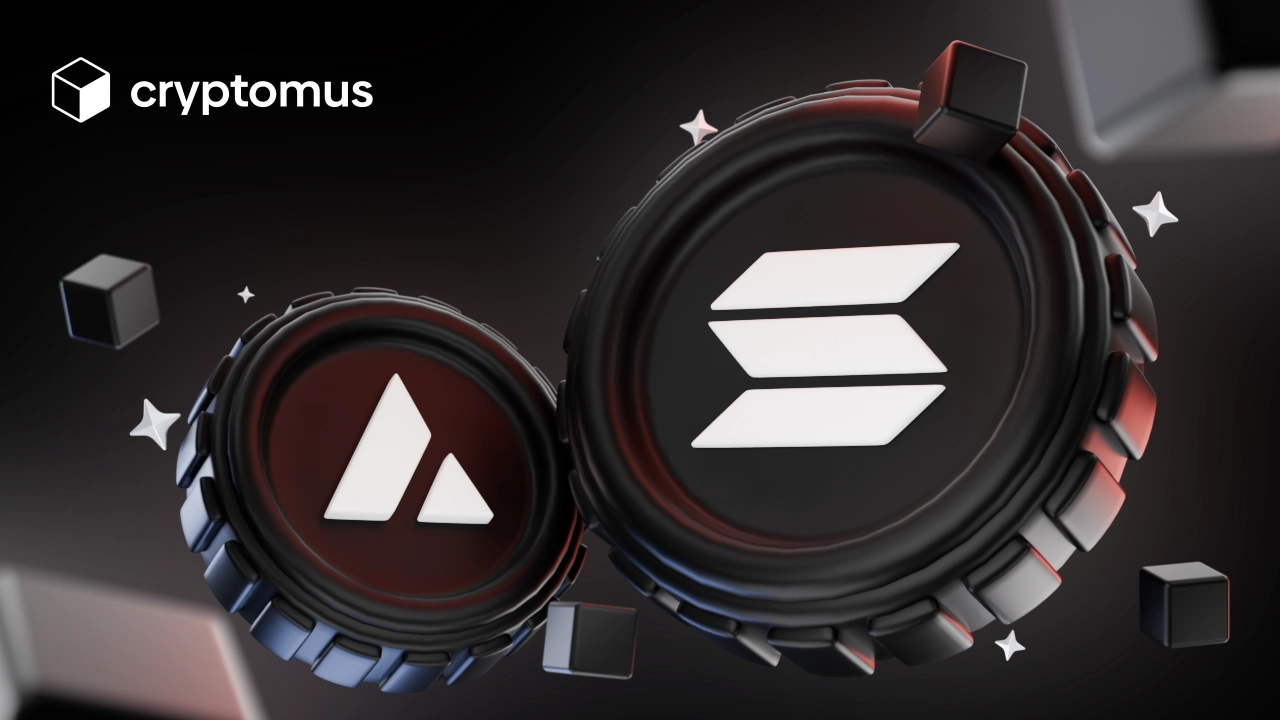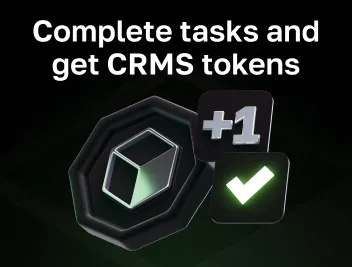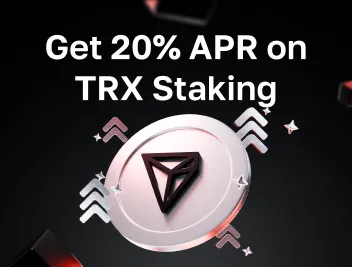
Solana Vs. Avalanche: A Complete Comparison
Debuting around the same time, Solana and Avalanche have emerged as two prominent contenders. But what sets them apart?
This guide will clearly outline the differences between the two. We will explore the main qualities of each token to determine which one is the perfect match for your goals.
What is Solana (SOL)?
Solana is a high-performance blockchain network made for dApps and smart contracts. Combining Proof of Stake and Proof of History consensus mechanisms, it achieves rapid transaction processing.
By timestamping every transaction, PoH allows validators to independently confirm the sequence of events without a central authority. In turn, PoS rewards validators for holding SOL tokens and enables them to participate in network consensus and block validation.
Solana is built for scalability. It achieves high transaction processing by distributing it across thousands of validators using GPUs. Therefore, it can process thousands of transactions every second while charging minimal fees.
What is Avalanche (AVAX)?
Similar to Solana, Avalanche is a relatively new crypto player. It uses another method for addressing the scalability problems affecting conventional blockchain systems.
AVAX utilizes a Snowman consensus protocol with a three-chain architecture:
- X-Chain: Used for handling asset transfers.
- C-Chain: It runs EVM-compatible smart contracts.
- P-Chain: Coordinates validators and secures the network.
This approach gives Avalanche several advantages. It provides flexibility through customization, enabling the development of specialized blockchains. Moreover, it reduces the complexity of moving dApps from Ethereum to Avalanche.
Solana Vs. Avalanche: Key Differences
Avalanche and Solana differ in terms of transaction speed, scalability, fees, consensus mechanism, usage, and smart contract compatibility. Let’s take a closer look:
Transaction Speed
Solana and Avalanche are both impressive at processing transactions, but AVAX takes the crown here. Avalanche transactions get irreversibly confirmed across the network in 2 seconds. The Solana transaction settlement time takes around 10 seconds on average.
Scalability
Solana has a clear advantage in terms of scalability. Capable of processing 50,000 transactions per second with negligible delays, it's perfect for high-frequency trading.
Avalanche boasts impressive transaction processing, though Solana remains the speed leader. It handles 4,500 transactions per second, which makes it suitable for dApp users.
Fees
Avalanche transaction fees generally tend to be higher than those on Solana, but both are pretty low compared to other blockchains. An Avalanche transfer costs around $0.01, and Solana charges around $0.001.
Hence, AVAX fees depend on network congestion, so they can fluctuate slightly. The same goes for SOL, as its fees can vary based on the transaction's complexity.
Consensus Mechanism
Solana utilizes a mix of PoH and PoS. PoH establishes a verifiable order of events before consensus, while PoS secures the network through staking. Avalanche uses the Snowman consensus protocol, which utilizes a three-chain structure for security, scalability, and customization.
Thus, Solana prioritizes speed and efficiency, while Avalanche focuses on versatility and customization by allowing for multiple consensus configurations.

Smart Contract Compatibility
Solana uses its own programming language called Rust as its main tool for building smart contract apps. It requires developers to build apps specifically for the Solana platform.
As for AVAX, it offers EVM compatibility, allowing developers to port existing Ethereum dApps to Avalanche with minimal modifications.
Use Cases
While both coins prioritize high transaction volumes, their use cases differ significantly. Solana's rapid transaction speeds and minimal fees create a perfect environment for high-frequency trading, immersive gaming experiences, and innovative DeFi applications. Users also benefit from smooth payments and effortless dApp interactions.
Avalanche's strength lies in its versatility. It is better suited for users who want to build or explore complex blockchain projects. It's made for creating unique digital assets and financial tools. If you plan to go beyond simple transactions and dive deeper into blockchain technology, AVAX could be a good option.
Solana Vs. Avalanche: Which Is Better To Buy?
Your choice between Solana and Avalanche as an investment should be tailored to your individual requirements. Avalanche is better than Solana in terms of decentralization and flexibility, offering custom blockchains for diverse applications. But Solana outshines it in speed and low fees, making it appealing for high-performance use cases.
To put it simply, choose Solana if:
- You need high transaction speeds and low fees for DeFi, NFTs, or gaming
- You're interested in high-performance dApps built for the Solana ecosystem
- You're comfortable with a new programming language and are willing to explore a relatively new ecosystem
Avalanche will be a better choice for you if:
- You want customizable blockchain solutions
- You prefer a platform with EVM compatibility for easier development and migration of Ethereum-based projects
- You prioritize decentralization and network stability
For an average user, Solana is generally better due to its speed and lower costs, making it more practical for everyday use. Avalanche is a good choice if you need more control and proficiency.
Solana Vs. Avalanche: A Head-To-Head Comparison
We’ve established the key differences between SOL and AVAX and can now directly compare these options:
| Feature | Solana (SOL) | Avalanche (AVAX) | |
|---|---|---|---|
| Launch Year | Solana (SOL)2020 | Avalanche (AVAX)2020 | |
| Total Supply | Solana (SOL)582.3M Tokens | Avalanche (AVAX)720M Tokens | |
| Consensus Mechanism | Solana (SOL)PoH and PoS | Avalanche (AVAX)The Snowman | |
| Transaction Speed | Solana (SOL)10 Seconds | Avalanche (AVAX)2 Seconds | |
| Fees | Solana (SOL)$0.001 | Avalanche (AVAX)$0.01 | |
| Scalability | Solana (SOL)50,000 Transactions Per Second | Avalanche (AVAX)4,500 Transactions Per Second | |
| Use Case | Solana (SOL)High-frequency trading, DeFi, NFTs, gaming | Avalanche (AVAX)Custom blockchain networks, DeFi, financial products | |
| Smart Contract Compatibility | Solana (SOL)Native language (Rust) | Avalanche (AVAX)EVM compatible | |
| Decentralization | Solana (SOL)Less decentralized | Avalanche (AVAX)More decentralized |
Now you know how Solana and Avalanche differ and can make a decision between the two. Remember to evaluate your goals and needs and do thorough research before investing your money.
We hope this guide was helpful. Send in your thoughts and questions below!
Rate the article








comments
0
You must be logged in to post a comment